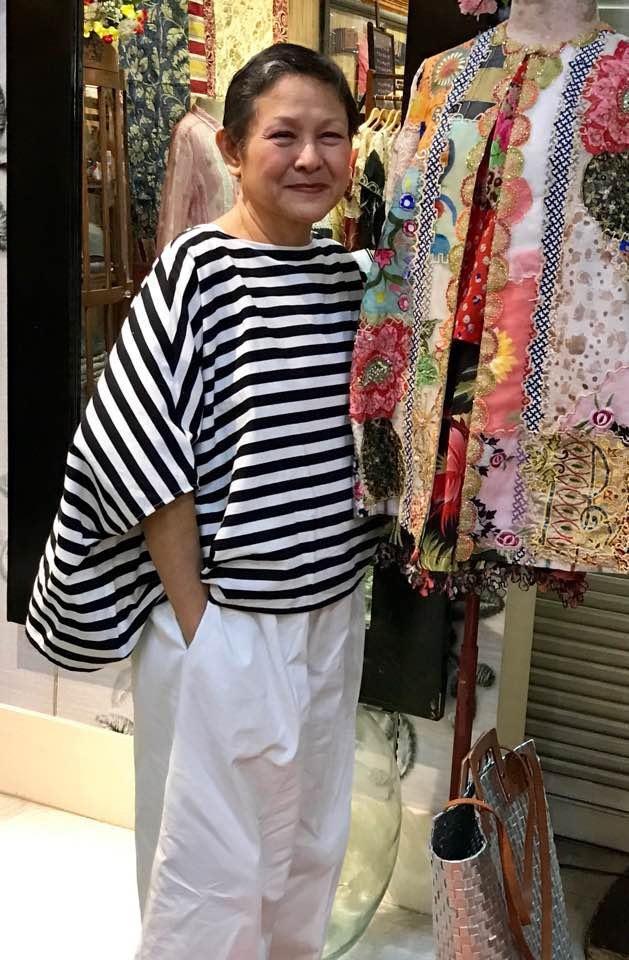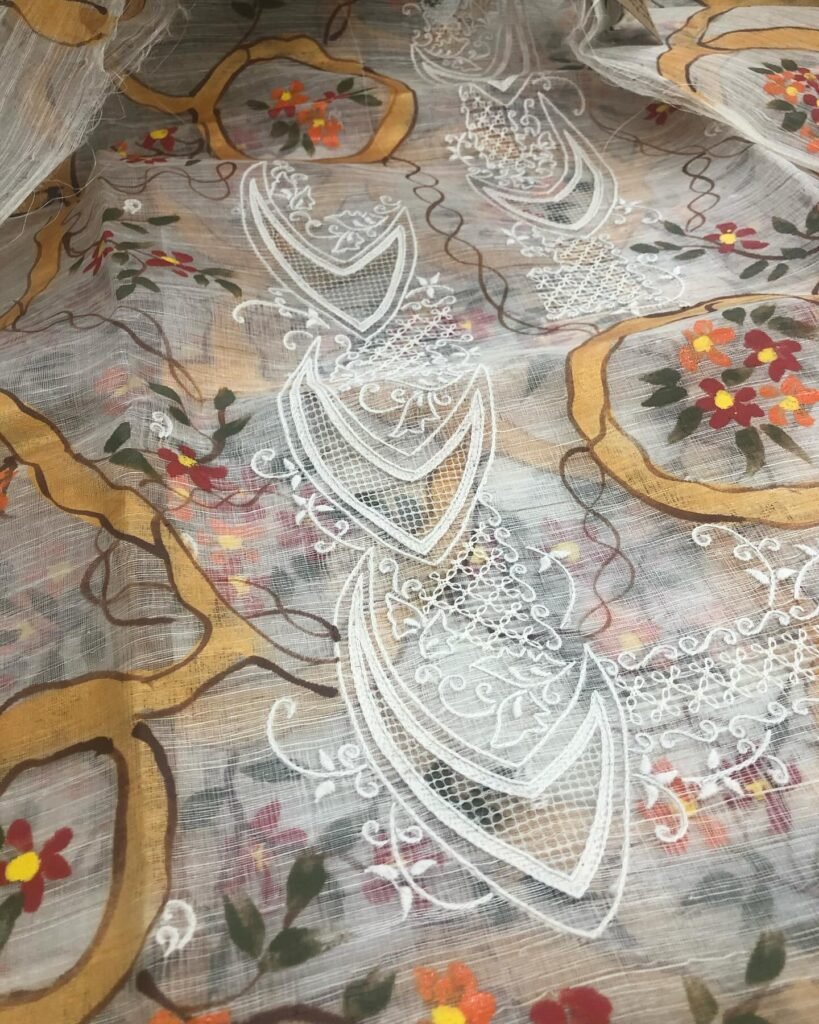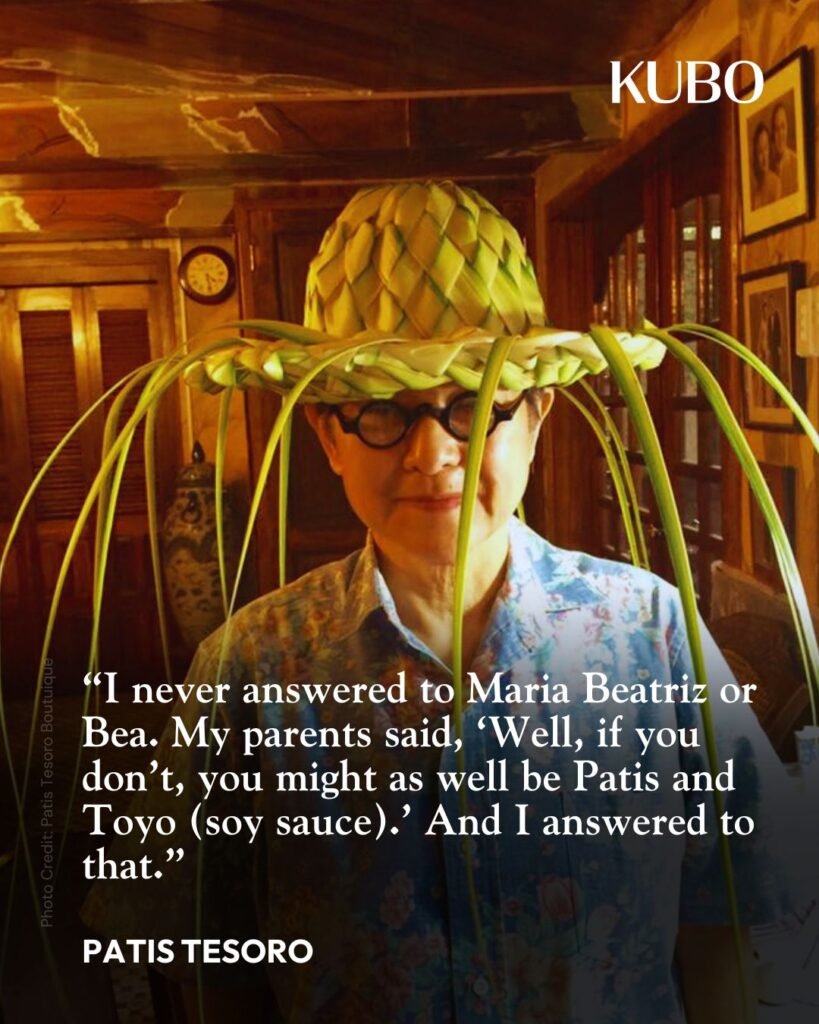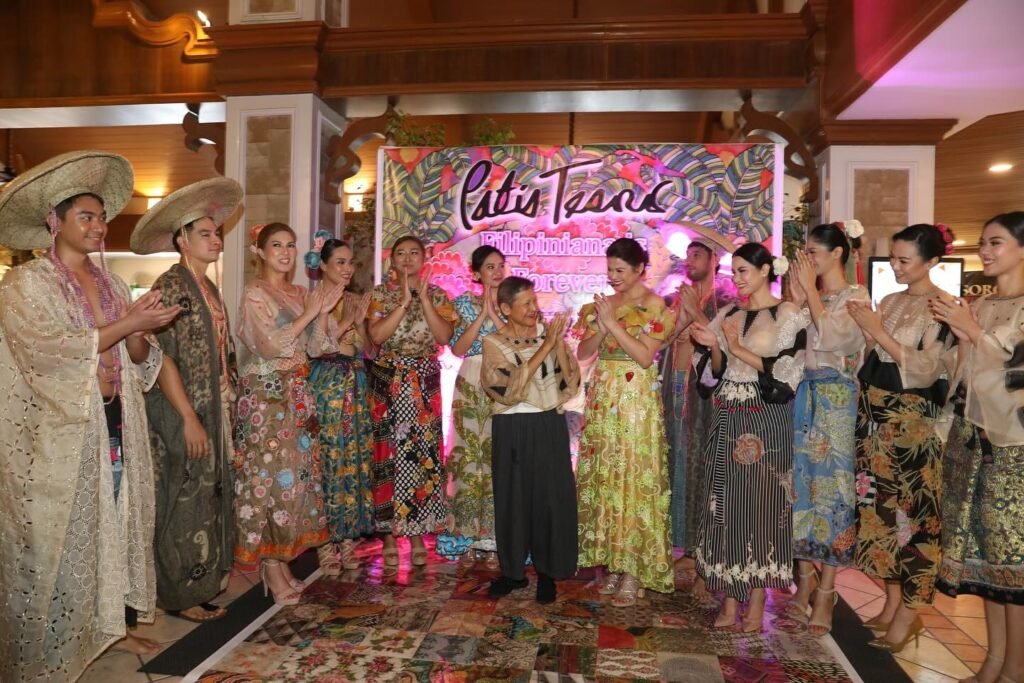“When you buy piña now, it’s expensive. But when you buy piña, it is with the thought that this will go to your daughter’s daughter.
“Do not get buried in piña. Filipinos traditionally get baptized in pineapple, married in pineapple, and die in pineapple — never mind the dying — it has to go to museums and the next generation. I want to encourage young designers now not to give up, and not to forget that embroidery is part of our culture. So if you buy it, you are keeping our tradition alive.”
— Patis Tesoro, “Filipiniana is Forever” event speech excerpt
Patis Tesoro, affectionately hailed as the Grand Dame of Philippine Fashion, has played a transformative role in reviving the delicate art of piña weaving—a craft once on the brink of extinction.

She ventured to the Visayas in 1986. There, she discovered that the once-thriving piña fabric industry had nearly vanished, with only a handful of part-time weavers—mostly resilient women in their late 80s—keeping the art alive. Realizing that without immediate action, the craft might disappear along with these artisans, she observed the meticulous process firsthand. “Piña weaving is far more intricate than it seems,” she explained. The delicate nature of piña meant that even a slight misstep can break up to ten strands, forcing weavers to painstakingly locate and rejoin each one. This demanding technique explains why a skilled artisan can produce only about 25 centimeters of fabric per day.
Tesoro’s decision has prevented the piña weaving craft from dying, and the meticulous work and care put into it has made sure that it remains high quality, much more sought out when compared with the embroidery of Taal. Patis Tesoro has successfully woven the value of high quality embroidery consciousness into the makers, impressing it as a way of life, and this is why it remains marketable and in demand even today.
Inspired by her deep local roots, Tesoro has always infused her ready-to-wear and couture collections with indigenous materials—ranging from Ilocos abel and abaca to tiniri, Mindanao silk, and the exquisite piña. This has made her signature piña terno and barong highly sought out by the Philippines’ one-percenters.

“I especially learned how its revival was intertwined with tradition and how it couldn’t succeed without community participation.” — Patis Tesoro
Tesoro embarked on the challenging mission of convincing local officials to introduce training programs for aspiring weavers. Her tireless advocacy paved the way for dedicated courses in piña weaving at the Aklan State College of Agriculture in the Visayas, firmly establishing Aklan as the vibrant hub of the nation’s piña industry.
“When one walks into a room decked out in ‘transparent finesse’, peopleimmediately recognize what is undeniably Filipino. Having said that, every Filipinashould have in her closet any one of the following: a barong, a malong, a tapis, a terno, a baro’t saya, a kimona, or a Maria Clara. The definition of being Filipino is not only seenin dance, architecture, or literature, it is especially seen in dress, as it is the mostpractical way of showing one’s identity, which provides a unique place in global society.” —Foreword for Kasuotan / 30 August 2018 Patis Tesoro

Filipiniana is Forever: A Celebration of Timeless Filipino Elegance
In a dazzling showcase of heritage and style, the “Filipiniana is Forever” event lit up the cultural scene at both the Malarayat Country Club in Lipa City, Batangas, and the Makati Sports Club. The evening was a vibrant fusion of tradition and contemporary flair, featuring a documentary film screening—originally directed by the late Tikoy Aguiluz—a captivating book launch, and a fashion show that left the audience spellbound.

Under the visionary leadership of Armando Bautista, head admin of Living Life, and with the creative guidance of Ping Panlilio, the event was a testament to the enduring spirit of Filipino artistry. It brought together an eclectic mix of designers, artists, and cultural advocates who shared a deep reverence for the rich tapestry of Filipino heritage.
At the Malarayat Golf and Country Club in Lipa, Batangas, influential voices from Vogue Philippines lent their expertise and prestige to the event—editor in chief Bea Valdes and fashion director Pam Quiñones. Notably, Vogue photographer and renowned jeweler and eyewear designer John-Paul Pietrus also graced the evening with his creative presence. Meanwhile, at the Makati Sports Club, Marie Ritz Gesell Pay Seng, content director at Kubo Lifestyle Magazine, added her vibrant energy to the occasion.
Notable contributions also came from the local creative community of Batangas. The LL Meet Up Lipa segment featured organizers Maria Kayla Acorda, Luisito Nario, and Izzie Noissim of LTN Events, alongside Joel Umali Pena, fashion designers Santa Emmanuelle and Paul Semira, and the talented team of Lipa fashion models and hair & makeup professionals.
Over in Makati, the innovative minds of Kingsley Medalla, Monica Concepcion, and Christel Payseng of Pizzazz Luxury Events added their unique touch to the celebration.

The runway came alive with the artistry of the Patis Tesoro Fashion Show team, where Ogee Atos, Bong Regala, and Joel Laxamana led a mesmerizing display of modern Filipiniana. Their work was complemented by a stellar ensemble of models and behind-the-scenes professionals who brought each meticulously crafted piece to life. Additional creative contributions from Renel Batralo of RolyoLikha, visual artist David Justimbaste, Yuka Eucasion, Ryn Paul N. Gonzales, and Raymond Cruz highlighted the diverse expressions of Filipino culture and craftsmanship.

“Filipiniana is Forever” was more than an event—it was a cultural phenomenon, blending historical richness with contemporary innovation, and reaffirming the indomitable spirit of Filipino fashion. As tradition met modernity on every runway and every page of the showcased book, the legacy of piña weaving and native artistry is not only preserved but celebrated in grand style.

